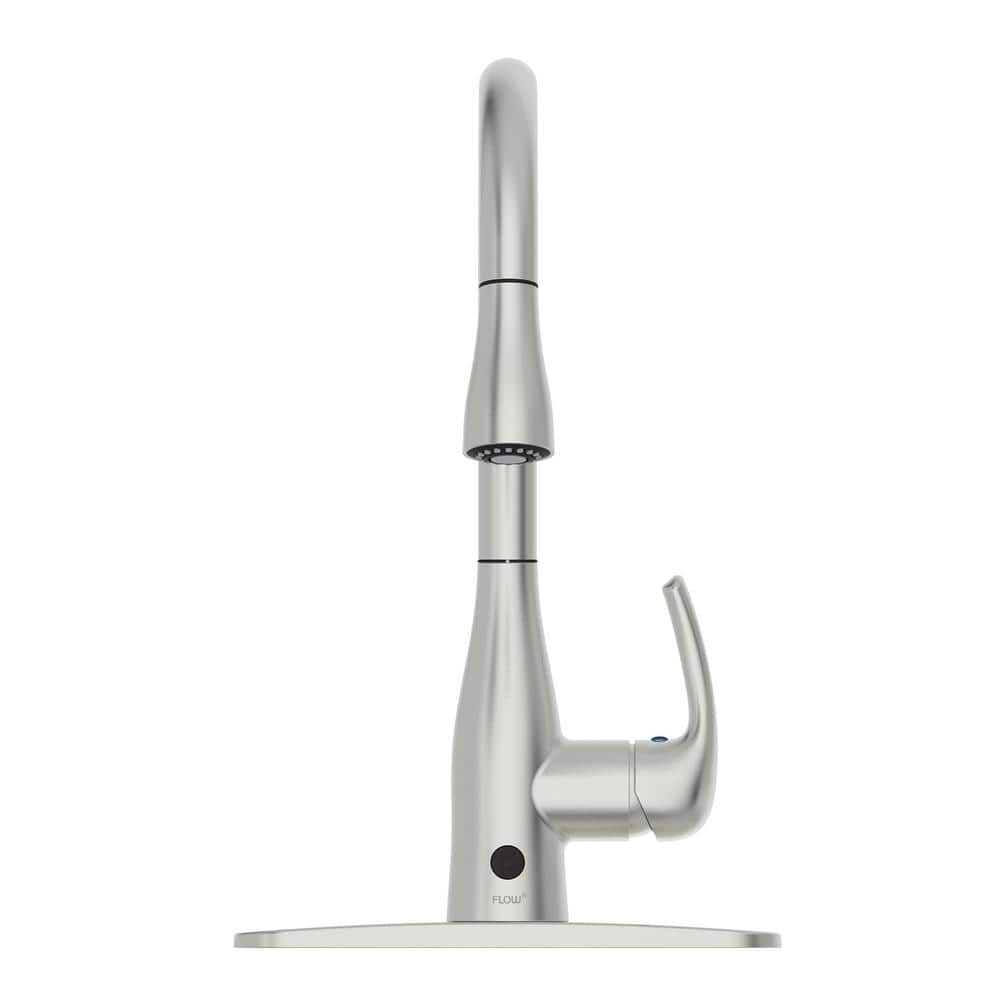FLOW Motion Activated Single-Handle Pull-Down Sprayer Kitchen Faucet in Brushed Nickel
Manual and hands-free motion sense controls for convenience. Smart auto-off programing turns water off after three minutes. Simple setup for an easy installation-no hard wiring.
Elevate your kitchen design with this Motion Activated Single-Handle Pull-Down Sprayer Kitchen Faucet in Brushed Nickel. You can easily pair this with a variety of design schemes. It features a built-in timer that turns off the waterflow after three minutes. It also has a hands-free motion sensor for easy operation.
- Brushed nickel finish
- Hands free motion sensor with auto-off functionality
- Single-hole or three-hole installation options
- Drip-free ceramic cartridge
- 1.8 GPM maximum at 60 psi
- Metallic waterway
- High-arc design
- No hardwiring required
- Two spray settings
- Smart latch retraction
- Retractable pulldown hose with lock and auto-off feature
- Easy clean
- Motion sensor and manual use
- Includes 24.37 in. supply lines
Additional information
| Connection size (in.) | 3/8 In. |
|---|---|
| Extended Hose Length (in.) | 12 |
| Faucet Height (in.) | 15.5 |
| Spout Height (in.) | 15.5 |
| Certifications and Listings | IAPMO Certified, NSF Certified, NSF Listed |
| Manufacturer Warranty | 5 Year |






by Steve
I absolutely love this faucet! The on/off motion sensor is so nice and very convenient. I do wish the pull down hose was a little longer. The nozzle only reaches counter level and if you have it on the spray function, it splashes water all over the counter top. But, other then that, it works great and I’m very happy with it.
by James
I love the way this works and my spouse found it easy to install. It’s so convenient when doing prep work or cooking to have the motion activation to wash your hands off. The unit itself is nice looking and so far we’ve not had any problems like a few other reviewers have stated. Go for it. You’ll love it!
by Mike
Product came just as described online. I love the color and am excited to install in our new build! Liked it so much I purchased 2, one for pantry and one for kitchen.
by Steve
Great purchase. Works exceptionally well with hands free faucet use. Great color
by Chris
I love the flow motion technology, and the fauce looks very nice and works well.